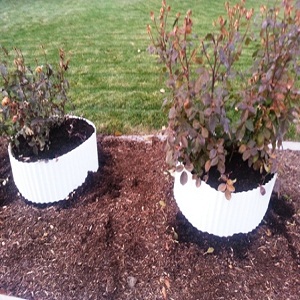How to Winterize Your Potted Roses

Who does not love roses? With the vibrant colors and intricate petal work, roses are the crown in any flower garden. Be it wild ones or the tea roses, the fragrance is beyond words and makes us all fall in love. These reasons make us give our roses special care and attention to preserve the beauty and the joy they bring in your lives. While many gardeners grow their roses in the ground, many others have them in pots they cane easily move around. Pots are a good option if you do not have much soil space in your home and you still want roses. However, as the mercury drops and the chill sets in, roses start demanding greater attention. You have to give them a safe passage through the winters so that they can bloom fully in the spring. While taking the pots inside might seem like the best option, do not do that because roses need to go through the cold transition for a healthy life cycle. If you place them inside, they will keep blooming and lose the energy to bloom in warmer months.
Instructions
-
1
Prune:
Prune out dead leaves and petals from the plant. However, do not prune the half alive ones because taking off will signal the plant to start growing again which you do not want during the winters. -
2
Fertilize:
You need to supply the plant enough food to go through the cold. Give it one last shot of fertilizer. However, the fertilizer that you choose should have a lower nitrogen content because nitrogen spurs growth. -
3
Location:
It is advised to keep the rose pot outside till the first frost. This way the rose will feel the chill and go dormant. If you shift it indoors earlier, it will keep growing through the winters.
After the first frost wave, move the pot inside to a garage or anywhere with shelter. The place needs to be dry and protected from wind. A covered yard or shed will also do. -
4
Store rose pot:
In the sheltered location, snip off all the leaves and flowers from the plant. When left on, these cause diseases. Remove all these and debris from the pot to prevent any mold. To protect the roots, you can cover the pot with burlap sack. Water a little once a month through the winter. This will keep the roots hydrated. Do not over water because the roots can rot in dormancy.



